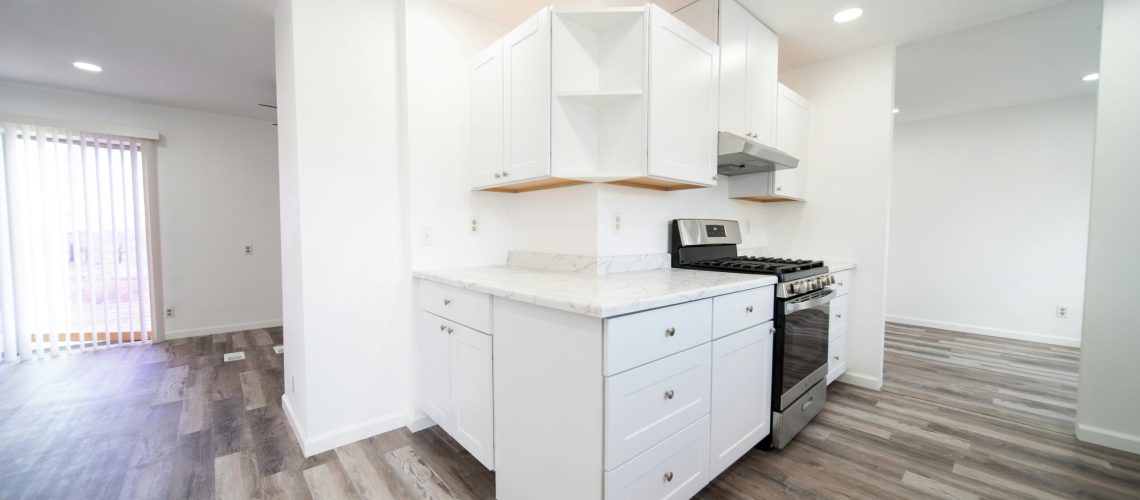The term “final walk-through” can often leave home buyers and sellers uncertain. What exactly is it? What purpose does it serve? Is it a critical step or just a formality? Let’s break it down.
What Is a Walk-Through?
A final walk-through is a homebuyer’s opportunity to inspect the property shortly before settlement. Its primary purpose is to ensure the seller delivers the home in the agreed-upon condition in the purchase contract. This step helps verify that any agreed-upon repairs have been completed and that the property hasn’t sustained any damage since the agreement was signed.
What Does the Walk-Through Cover?
The specifics of a walk-through depend on the terms outlined in the contract. Common conditions buyers verify during the walk-through include:
- “Substantially the Same Condition”: Ensuring the home is in roughly the same state as it was on the contract date.
- “Broom Clean”: Confirming the home is free of debris and reasonably clean.
- Working Systems and Appliances: Checking that essential systems—like heating, cooling, plumbing, and electrical—and any appliances included in the sale are functioning as expected. (Rocket Mortgage made a useful Final Walk-Through Checklist, you an check out.)
- Contractual Obligations: Verifying completion of specific tasks, such as replacing carpets, servicing HVAC systems, or cleaning gutters, as stipulated in the contract or addenda.
How much time is typically allowed for the Final walk-through?
Typically, a final walk-through is scheduled within 24 to 48 hours before closing on a property. This timeframe allows buyers to assess the home’s condition and ensure that any agreed-upon repairs have been completed. Coordinating with the seller and real estate agents is essential to ensure everyone is available during this critical time. If any issues are discovered during the walk-through, buyers should address them promptly before the closing process moves forward.

Can You Re-Negotiate After a Walk-Through?
A walk-through is not intended to reopen negotiations on the terms of the contract. Instead, it ensures the agreed-upon conditions are met. If issues arise during the walk-through—such as incomplete repairs or damage not previously disclosed—these should be addressed before closing. Buyers can request that the seller resolve the problem or provide financial compensation to cover the cost at settlement.
What Steps Should a Buyer Take if Significant Issues Are Discovered During the Walk-Through?
Suppose a buyer encounters significant issues during the final walk-through. In that case, it’s essential to take a systematic approach to address the situation. Here are the steps to follow:
- Document Everything: Take detailed notes and photographs of any issues found, such as incomplete repairs, damages, or appliances that are not functioning correctly. This documentation will be crucial for discussing any potential disputes with the seller.
- Review the Purchase Agreement: Go back to the contract and verify the specific obligations the seller agreed to fulfill before closing. Ensure that the issues you are raising fall within these outlined conditions.
- Communicate with Your Agent: Reach out to your real estate agent immediately to discuss the findings. They can help advise you on the next steps and may assist in negotiating with the seller.
- Discuss with the Seller: If possible, address the issues directly with the seller or agent. Present your documentation and explain the problems. This conversation can often lead to a resolution.
- Request Remedies: Depending on the severity of the issues, you can request different types of resolutions, such as:
- Immediate repairs before closing.
- A financial concession or credit at closing to cover repair costs.
- A postponement of the closing date will allow time for repairs to be completed.
- Consider Legal Advice: If the issues are substantial and cannot be resolved amicably, it may be necessary to seek legal advice. An attorney can guide your rights and options, including potential legal remedies.
- Be Prepared for a Potential Walk-Away: If significant issues remain unresolved. The terms cannot be renegotiated to your satisfaction; you may need to consider whether to proceed with the purchase or walk away. Depending on your contract, clauses protect your earnest money deposit if you choose not to proceed.
By following these steps, buyers can ensure that their interests are protected and that any significant issues are addressed before finalizing the purchase.
Are there any particular items or concerns buyers often overlook during the walk-through?
During the final walk-through, buyers may sometimes overlook key details that could impact their satisfaction with the purchase. Here are several items and concerns that are commonly missed:
- Operational Appliances: Buyers should test all major appliances, such as the refrigerator, oven, dishwasher, and washing machine, to ensure they function properly. It’s essential to check for any unusual noises or malfunctions.
- Condition of Walls and Floors: It’s easy to miss minor scratches, dents, or stains on walls and floors during a walk-through, especially if it is done quickly. Buyers should carefully inspect these surfaces and check for any signs of water damage or mold. (See what interior conditions home inspectors look for.)
- Windows and Doors: Buyers often forget to check the operation of windows and doors. Ensure they open and close smoothly and that locks function correctly. It’s also wise to check for any drafts or evidence of air leaks.
- Lighting: Test all light fixtures and switches to ensure they work. This includes checking the brightness and ensuring no flickering lights, which might indicate issues with the wiring.
- Heating and Cooling Systems: Make sure to check the operation of the heating and cooling systems. Turn the thermostat up and down to see if the system responds accordingly and maintains the set temperature.
- Pests: While sellers should disclose any pest issues, buyers might overlook signs of pests during the walk-through. Look for droppings or damage that could indicate an infestation.
- Exterior Conditions: Buyers should not neglect the exterior during the walk-through. Check the condition of the roof, gutters, and siding. Also, the landscaping and any fencing for maintenance needs must be assessed.
- Check for Unfinished Repairs: Verifying that any agreed-upon repairs were completed satisfactorily before closing is essential. Look for receipts or warranties for these repairs as well.
- Home Warranty or Manuals: Buyers should inquire about any home warranties and request manuals for appliances and systems to ensure they know how to operate them properly.
By being thorough and methodical during the final walk-through, buyers can better ensure that their new home meets their expectations and avoid potential surprises after closing.
Read Your Contract
For both buyers and sellers, reviewing the purchase agreement is essential. Understanding the home’s condition requirements at settlement ensures clarity and minimizes disputes during the walk-through.
Key items to focus on in the contract include:
- Specific conditions about the home’s cleanliness and functionality.
- Any repair or maintenance obligations the seller agreed to complete before closing.
Why Is the Final Walk-Through Important?
Though sometimes seen as a mere formality, the final walk-through is a critical step in home-buying. The buyer’s last chance is to confirm the property meets the agreed-upon standards before signing the final paperwork.
Taking this opportunity seriously can help prevent post-closing disputes and ensure a smoother transition into your new home.
Whether you’re buying or selling, understanding the purpose and importance of the final walk-through ensures everyone is on the same page—and that the transaction concludes as smoothly as possible.


